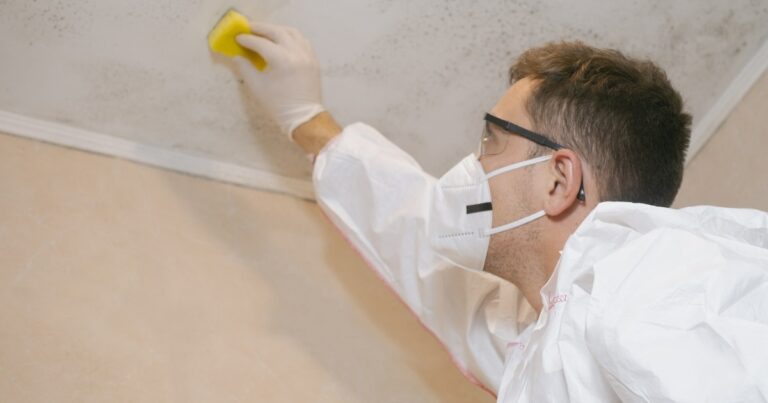Would you buy a home that once housed a fentanyl lab? Or, as a Realtor, would you want to list one? You may have already done so.
Homes once used for drug production pose serious health and safety risks. From the contamination and structural damage caused by clandestine labs to the electrical bypassing and mold risk of grow-ops, the risks are significant and varied. These properties also endanger not only owners or potential renters, but also first responders, inspectors, Realtors, and tradespeople.
Yet, despite the severity of these risks, there’s a patchwork of municipal bylaws here in British Columbia to govern the remediation and reintroduction of these properties to the market.
University study outlines the risk
The British Columbia Real Estate Association (BCREA) has long advocated for a more unified approach to drug home remediation. As each municipality across the province currently has its own varying remediation processes, there are significant differences in methodology. This not only increases the risk for potential buyers, but it also contributes to the challenges they face in sourcing lenders and insurers.
In 2017, BCREA commissioned a report from the Centre for Public Safety and Criminal Justice Research at the University of the Fraser Valley (UFV) that underscored the fragmented nature of local policies and processes. That report called for a provincial framework to replace the inconsistent and often inadequate regulations found in municipal bylaws.
Last year, we followed up with a second UFV study, which reviewed bylaws from 20 municipalities and districts and included interviews with 14 experts and stakeholders. The findings reinforced concern that the current system leaves too much to chance and identified significant gaps due to lack of standardization and differing municipal resources and approaches.
Some municipalities require certification for remediation contractors; others don’t. Some mandate disclosure of a property’s drug-related history; others don’t. These inconsistencies erode public trust and create confusion for buyers, lenders, and Realtors navigating transactions involving these homes.
Four-step designation recommended
The health risks are not theoretical. Fentanyl and other synthetic opioids can leave behind toxic residues that are hazardous even in trace amounts. Other immediate safety hazards include modified electrical systems as well as mold or other contaminants, depending on the type of former drug operation. Without clear, enforceable standards, there’s no guarantee a remediated home is truly safe. As a province, British Columbia could be doing better.
The initial UFV report commissioned by BCREA recommended a standardized four-step process of provincial scope. The four steps include:
-
Inspection #1;
-
Remediation;
-
Inspection #2; and
-
Designation
This standardized process would create a more reliable system of remediation and certification to provide stronger protections for buyers, and a stronger degree of assurance for financial institutions and insurers to verify that remediation has been done properly.
Call to action
BCREA is calling on the provincial government to adopt four key reforms:
-
First, establish enforceable provincial health and safety standards under the Public Health Act to define safe levels of contaminant exposure.
-
Second, require licensing and training for remediation professionals and home inspectors, overseen by WorkSafeBC.
-
Third, implement a province-wide, standardized process of remediation.
-
And, finally, develop a centralized, publicly accessible registry of inspection and remediation records.
These recommendations are not radical. They’re practical, evidence-based, and backed by a growing coalition of industry professionals, public health experts, and law enforcement. Groups like the Canadian Mortgage Brokers Association – British Columbia, the Appraisal Institute of Canada – British Columbia, and the Mortgage and Title Insurance Industry Association of Canada have joined the call to action.
We understand that stigma is a concern. Homes once used for drug production can face diminished value and buyer hesitation. Stronger, standardized processes of remediation will increase public trust, and make it easier for prospective buyers to access lending and insurance.
The real estate sector is ready to do its part. Now it’s time for provincial leadership to do the same. We need to move past the patchwork and create a consistent system that protects buyers, sellers, Realtors, and communities alike.
Bottom line
Once B.C. implements its standard, it could serve as a blueprint for other provinces to follow. Ontario, for example, also currently operates under a fragmented framework.
The reality is that drug production is an issue in communities across the country. The implications and outcomes of this for the real estate sector could be far better, more comprehensively handled. In the end, this would better protect communities.
With new and dangerous substances entering the country, a coordinated and consistent approach to drug home remediation is no longer optional. It’s essential.
The time for action isn’t someday. It’s now.

Jasroop Gosal is the Government Relations Manager at the BC Real Estate Association (BCREA). Before joining BCREA, he was the Spokesperson and Policy & Research Manager at the Surrey Board of Trade, where he advanced initiatives related to housing, infrastructure, and economic development. Jasroop brings a background in nonprofit leadership and business advocacy, with a focus on building cross-sector partnerships and driving local impact. He has also worked on strategic campaigns at the municipal, provincial, and federal levels, and is passionate about community-building, public policy, and empowering inclusive economic growth across British Columbia.

